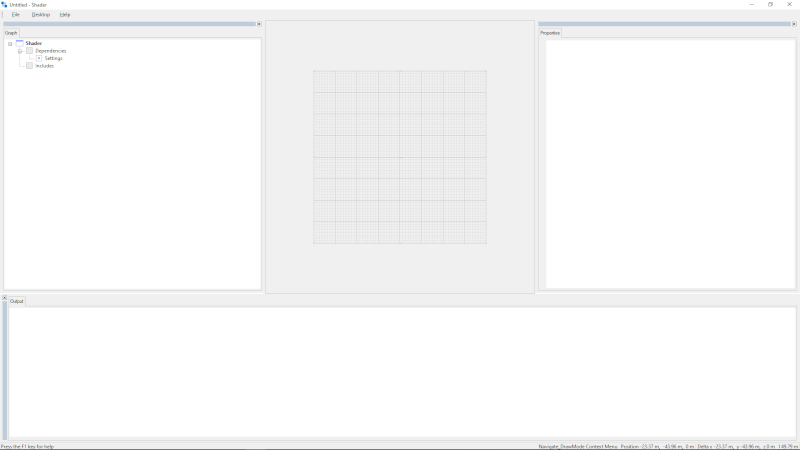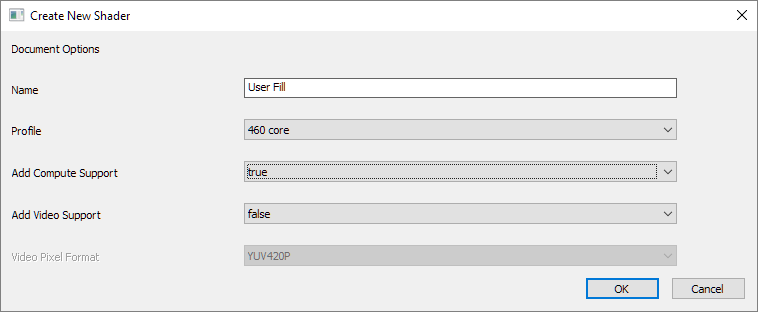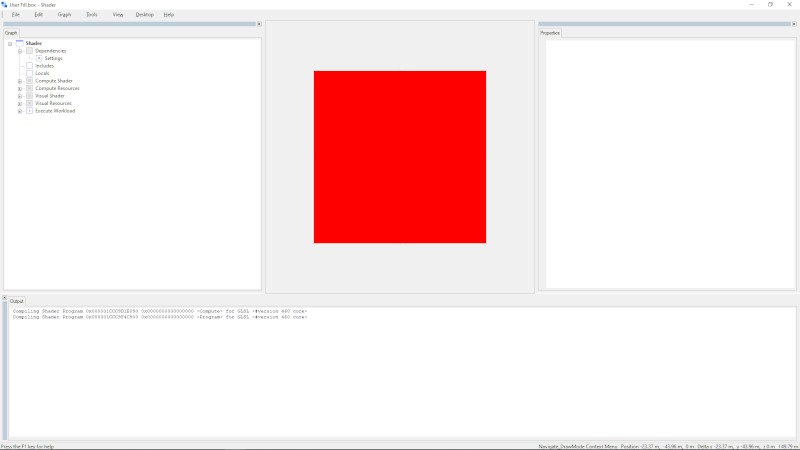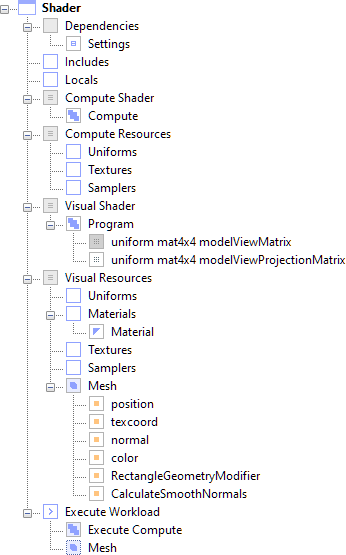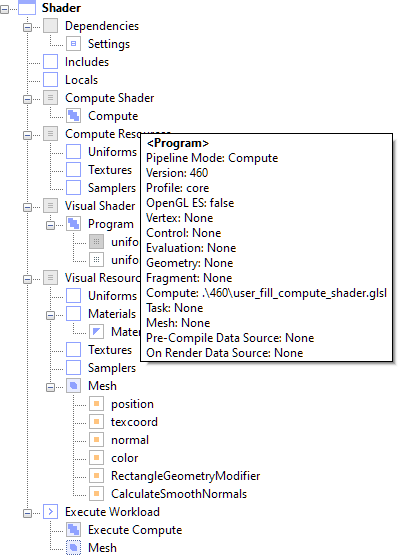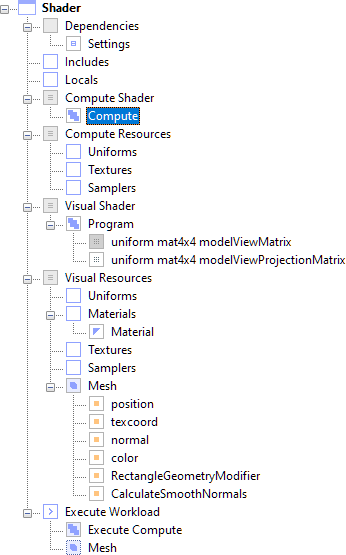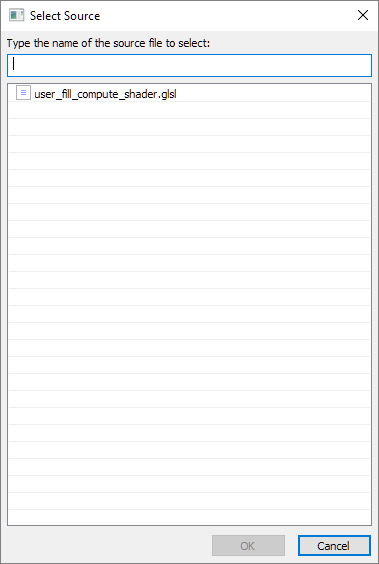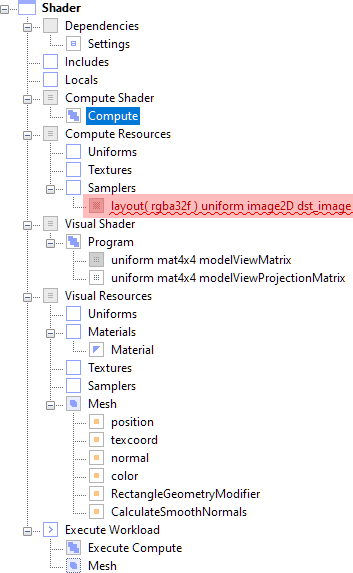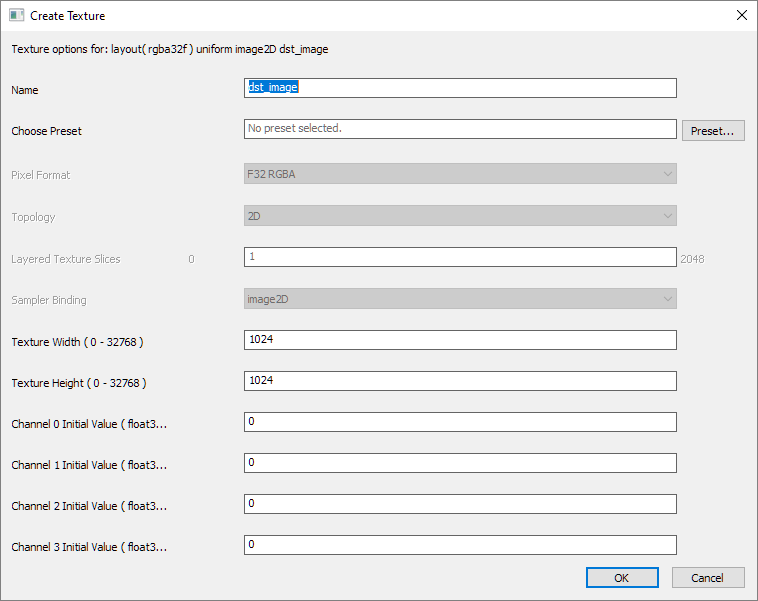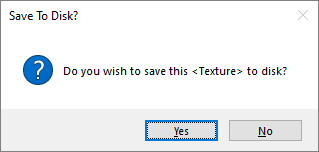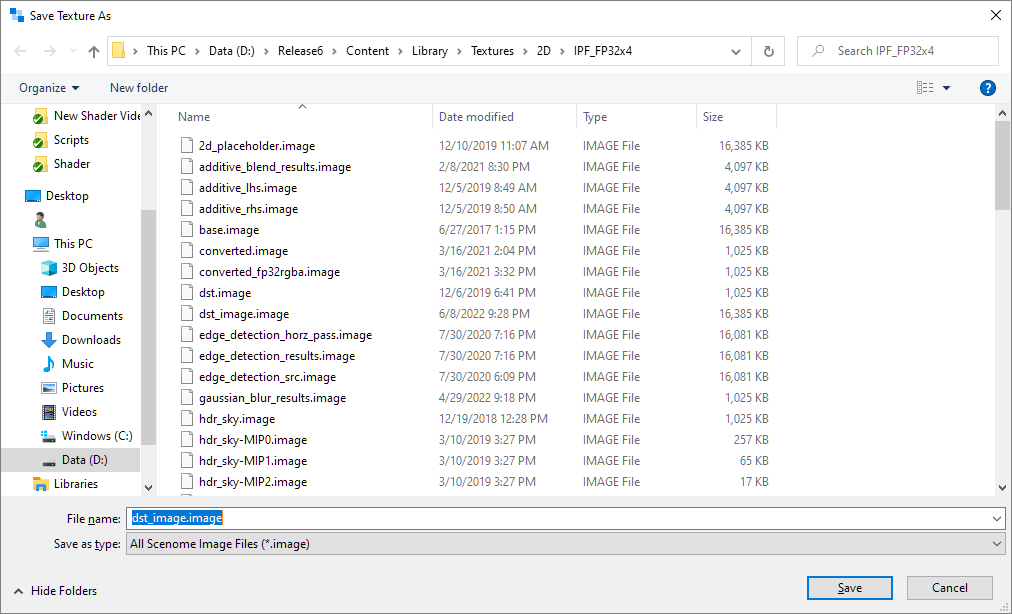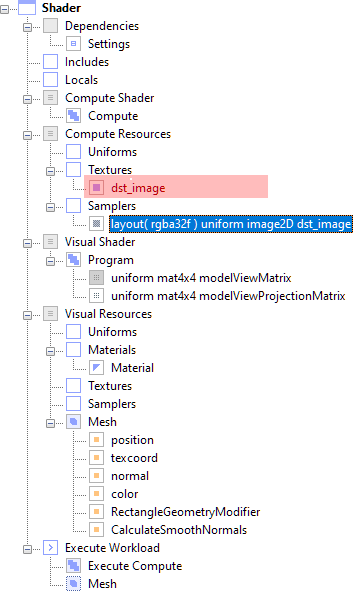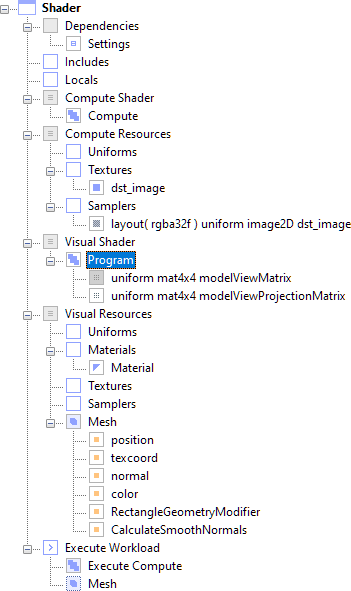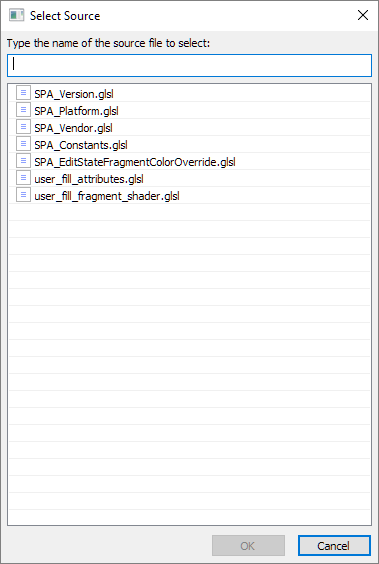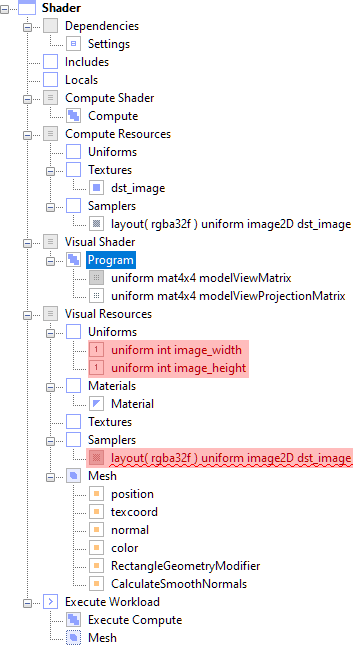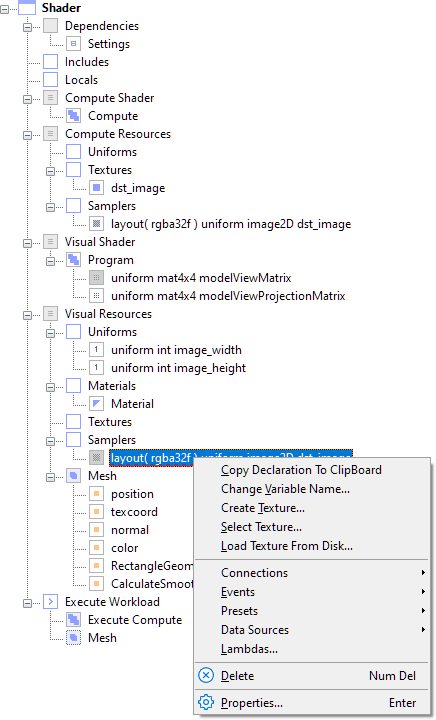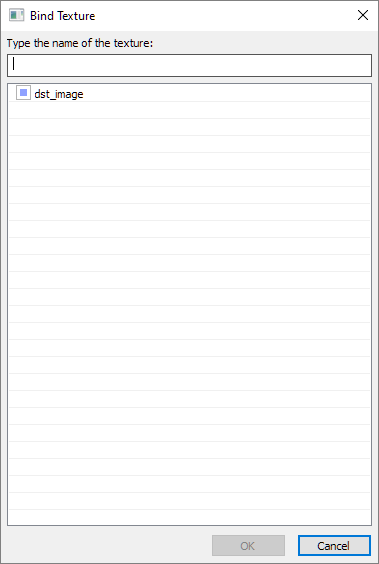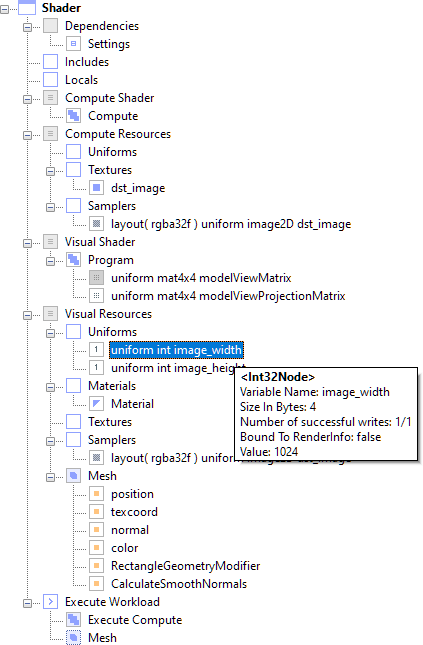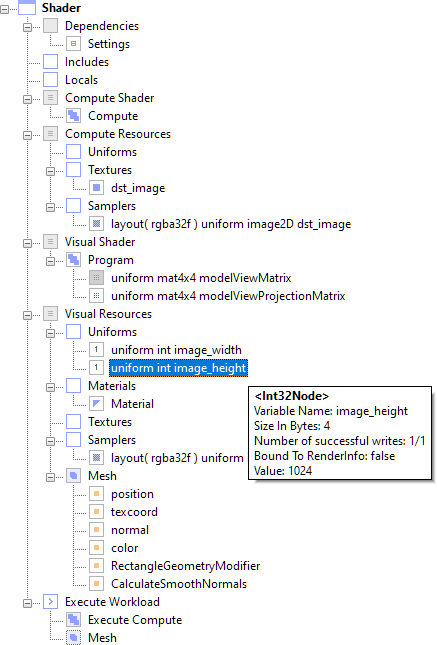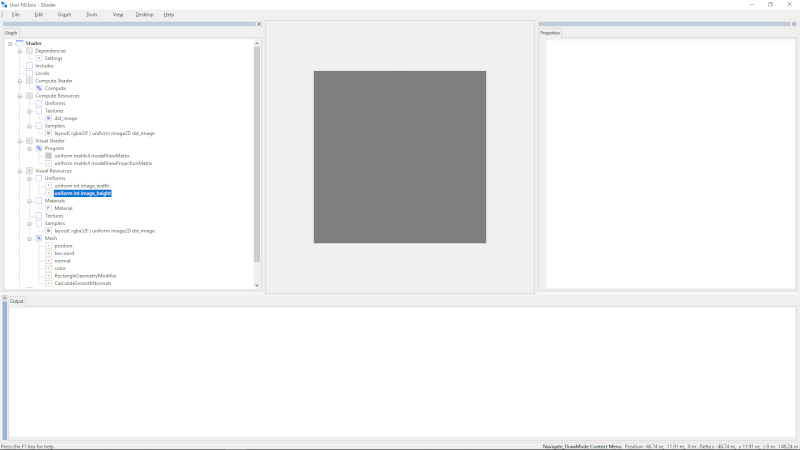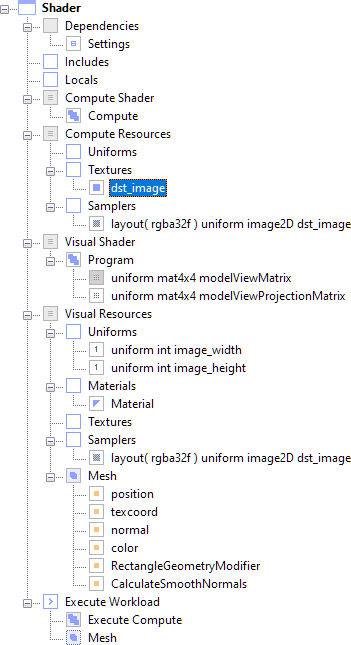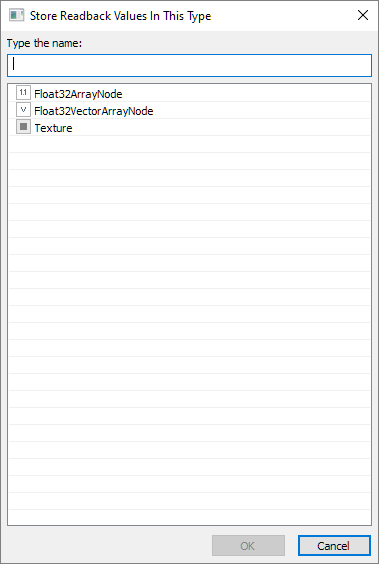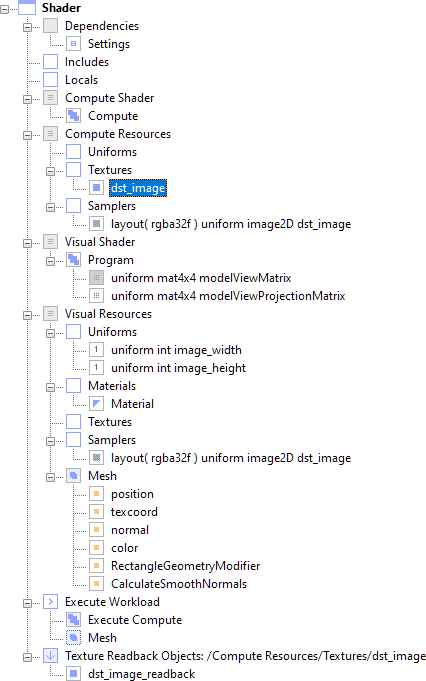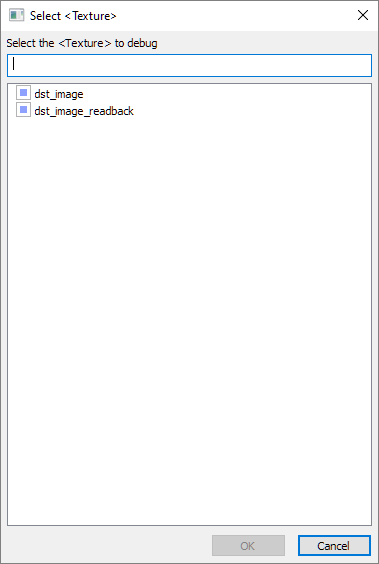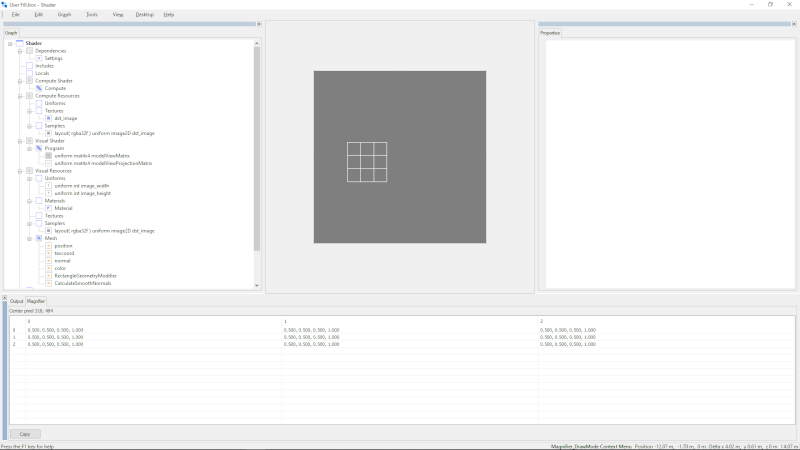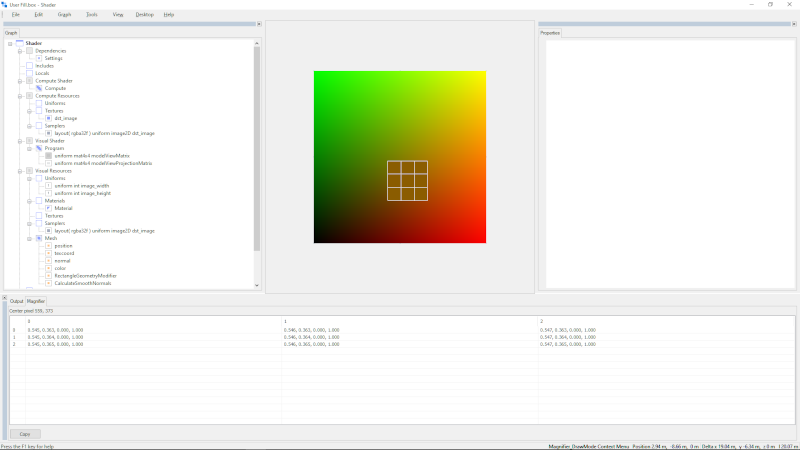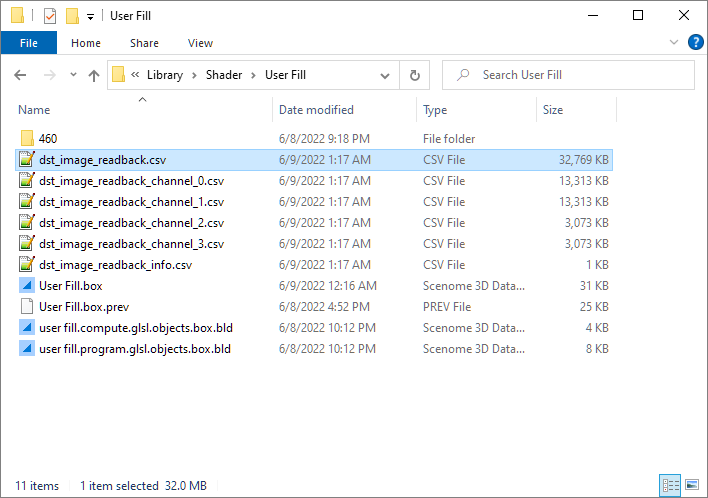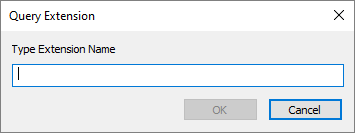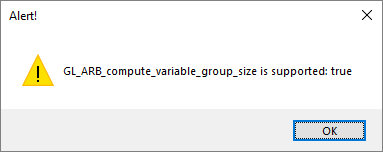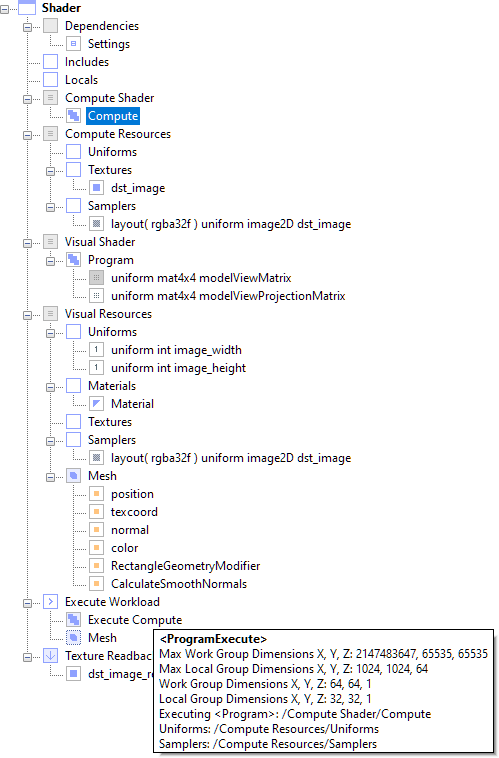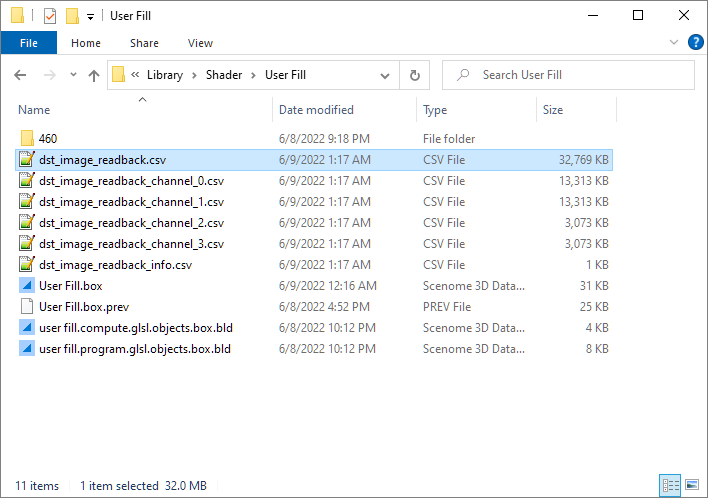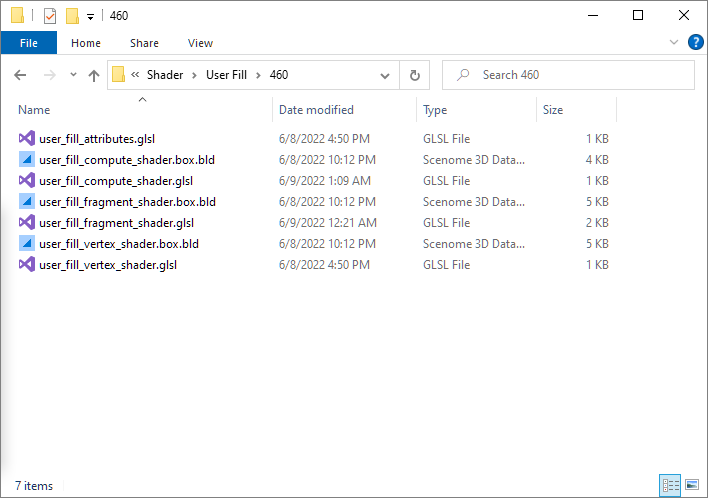Open the file dst_image_read_back.txt in a text editor.
The contents look like this:
0, 0, 0, 1, 0.0009765625, 0, 0, 1, 0.001953125, 0, 0, 1, 0.0029296875, 0, 0, 1, 0.00390625, 0, 0, 1, 0.0048828125, 0, 0, 1, 0.00585937...
0, 0.0009765625, 0, 1, 0.0009765625, 0.0009765625, 0, 1, 0.001953125, 0.0009765625, 0, 1, 0.0029296875, 0.0009765625, 0, 1, 0.00390625...
0, 0.001953125, 0, 1, 0.0009765625, 0.001953125, 0, 1, 0.001953125, 0.001953125, 0, 1, 0.0029296875, 0.001953125, 0, 1, 0.00390625, 0....
0, 0.0029296875, 0, 1, 0.0009765625, 0.0029296875, 0, 1, 0.001953125, 0.0029296875, 0, 1, 0.0029296875, 0.0029296875, 0, 1, 0.00390625...
0, 0.00390625, 0, 1, 0.0009765625, 0.00390625, 0, 1, 0.001953125, 0.00390625, 0, 1, 0.0029296875, 0.00390625, 0, 1, 0.00390625, 0.0039...
0, 0.0048828125, 0, 1, 0.0009765625, 0.0048828125, 0, 1, 0.001953125, 0.0048828125, 0, 1, 0.0029296875, 0.0048828125, 0, 1, 0.00390625...
0, 0.005859375, 0, 1, 0.0009765625, 0.005859375, 0, 1, 0.001953125, 0.005859375, 0, 1, 0.0029296875, 0.005859375, 0, 1, 0.00390625, 0....
0, 0.0068359375, 0, 1, 0.0009765625, 0.0068359375, 0, 1, 0.001953125, 0.0068359375, 0, 1, 0.0029296875, 0.0068359375, 0, 1, 0.00390625...
0, 0.0078125, 0, 1, 0.0009765625, 0.0078125, 0, 1, 0.001953125, 0.0078125, 0, 1, 0.0029296875, 0.0078125, 0, 1, 0.00390625, 0.0078125,...
0, 0.0087890625, 0, 1, 0.0009765625, 0.0087890625, 0, 1, 0.001953125, 0.0087890625, 0, 1, 0.0029296875, 0.0087890625, 0, 1, 0.00390625...
0, 0.009765625, 0, 1, 0.0009765625, 0.009765625, 0, 1, 0.001953125, 0.009765625, 0, 1, 0.0029296875, 0.009765625, 0, 1, 0.00390625, 0....
0, 0.0107421875, 0, 1, 0.0009765625, 0.0107421875, 0, 1, 0.001953125, 0.0107421875, 0, 1, 0.0029296875, 0.0107421875, 0, 1, 0.00390625...
0, 0.01171875, 0, 1, 0.0009765625, 0.01171875, 0, 1, 0.001953125, 0.01171875, 0, 1, 0.0029296875, 0.01171875, 0, 1, 0.00390625, 0.0117...
0, 0.0126953125, 0, 1, 0.0009765625, 0.0126953125, 0, 1, 0.001953125, 0.0126953125, 0, 1, 0.0029296875, 0.0126953125, 0, 1, 0.00390625...
0, 0.013671875, 0, 1, 0.0009765625, 0.013671875, 0, 1, 0.001953125, 0.013671875, 0, 1, 0.0029296875, 0.013671875, 0, 1, 0.00390625, 0....
0, 0.0146484375, 0, 1, 0.0009765625, 0.0146484375, 0, 1, 0.001953125, 0.0146484375, 0, 1, 0.0029296875, 0.0146484375, 0, 1, 0.00390625...
0, 0.015625, 0, 1, 0.0009765625, 0.015625, 0, 1, 0.001953125, 0.015625, 0, 1, 0.0029296875, 0.015625, 0, 1, 0.00390625, 0.015625, 0, 1...
0, 0.0166015625, 0, 1, 0.0009765625, 0.0166015625, 0, 1, 0.001953125, 0.0166015625, 0, 1, 0.0029296875, 0.0166015625, 0, 1, 0.00390625...
0, 0.017578125, 0, 1, 0.0009765625, 0.017578125, 0, 1, 0.001953125, 0.017578125, 0, 1, 0.0029296875, 0.017578125, 0, 1, 0.00390625, 0....
0, 0.0185546875, 0, 1, 0.0009765625, 0.0185546875, 0, 1, 0.001953125, 0.0185546875, 0, 1, 0.0029296875, 0.0185546875, 0, 1, 0.00390625...
0, 0.01953125, 0, 1, 0.0009765625, 0.01953125, 0, 1, 0.001953125, 0.01953125, 0, 1, 0.0029296875, 0.01953125, 0, 1, 0.00390625, 0.0195...
0, 0.0205078125, 0, 1, 0.0009765625, 0.0205078125, 0, 1, 0.001953125, 0.0205078125, 0, 1, 0.0029296875, 0.0205078125, 0, 1, 0.00390625...
0, 0.021484375, 0, 1, 0.0009765625, 0.021484375, 0, 1, 0.001953125, 0.021484375, 0, 1, 0.0029296875, 0.021484375, 0, 1, 0.00390625, 0....
0, 0.0224609375, 0, 1, 0.0009765625, 0.0224609375, 0, 1, 0.001953125, 0.0224609375, 0, 1, 0.0029296875, 0.0224609375, 0, 1, 0.00390625...
0, 0.0234375, 0, 1, 0.0009765625, 0.0234375, 0, 1, 0.001953125, 0.0234375, 0, 1, 0.0029296875, 0.0234375, 0, 1, 0.00390625, 0.0234375,...
0, 0.0244140625, 0, 1, 0.0009765625, 0.0244140625, 0, 1, 0.001953125, 0.0244140625, 0, 1, 0.0029296875, 0.0244140625, 0, 1, 0.00390625...
0, 0.025390625, 0, 1, 0.0009765625, 0.025390625, 0, 1, 0.001953125, 0.025390625, 0, 1, 0.0029296875, 0.025390625, 0, 1, 0.00390625, 0....
0, 0.0263671875, 0, 1, 0.0009765625, 0.0263671875, 0, 1, 0.001953125, 0.0263671875, 0, 1, 0.0029296875, 0.0263671875, 0, 1, 0.00390625...
0, 0.02734375, 0, 1, 0.0009765625, 0.02734375, 0, 1, 0.001953125, 0.02734375, 0, 1, 0.0029296875, 0.02734375, 0, 1, 0.00390625, 0.0273...
0, 0.0283203125, 0, 1, 0.0009765625, 0.0283203125, 0, 1, 0.001953125, 0.0283203125, 0, 1, 0.0029296875, 0.0283203125, 0, 1, 0.00390625...
0, 0.029296875, 0, 1, 0.0009765625, 0.029296875, 0, 1, 0.001953125, 0.029296875, 0, 1, 0.0029296875, 0.029296875, 0, 1, 0.00390625, 0....
0, 0.0302734375, 0, 1, 0.0009765625, 0.0302734375, 0, 1, 0.001953125, 0.0302734375, 0, 1, 0.0029296875, 0.0302734375, 0, 1, 0.00390625...
0, 0.03125, 0, 1, 0.0009765625, 0.03125, 0, 1, 0.001953125, 0.03125, 0, 1, 0.0029296875, 0.03125, 0, 1, 0.00390625, 0.03125, 0, 1, 0.0...
0, 0.0322265625, 0, 1, 0.0009765625, 0.0322265625, 0, 1, 0.001953125, 0.0322265625, 0, 1, 0.0029296875, 0.0322265625, 0, 1, 0.00390625...
0, 0.033203125, 0, 1, 0.0009765625, 0.033203125, 0, 1, 0.001953125, 0.033203125, 0, 1, 0.0029296875, 0.033203125, 0, 1, 0.00390625, 0....
0, 0.0341796875, 0, 1, 0.0009765625, 0.0341796875, 0, 1, 0.001953125, 0.0341796875, 0, 1, 0.0029296875, 0.0341796875, 0, 1, 0.00390625...
0, 0.03515625, 0, 1, 0.0009765625, 0.03515625, 0, 1, 0.001953125, 0.03515625, 0, 1, 0.0029296875, 0.03515625, 0, 1, 0.00390625, 0.0351...
0, 0.0361328125, 0, 1, 0.0009765625, 0.0361328125, 0, 1, 0.001953125, 0.0361328125, 0, 1, 0.0029296875, 0.0361328125, 0, 1, 0.00390625...
0, 0.037109375, 0, 1, 0.0009765625, 0.037109375, 0, 1, 0.001953125, 0.037109375, 0, 1, 0.0029296875, 0.037109375, 0, 1, 0.00390625, 0....
0, 0.0380859375, 0, 1, 0.0009765625, 0.0380859375, 0, 1, 0.001953125, 0.0380859375, 0, 1, 0.0029296875, 0.0380859375, 0, 1, 0.00390625...
0, 0.0390625, 0, 1, 0.0009765625, 0.0390625, 0, 1, 0.001953125, 0.0390625, 0, 1, 0.0029296875, 0.0390625, 0, 1, 0.00390625, 0.0390625,...
0, 0.0400390625, 0, 1, 0.0009765625, 0.0400390625, 0, 1, 0.001953125, 0.0400390625, 0, 1, 0.0029296875, 0.0400390625, 0, 1, 0.00390625...
...
